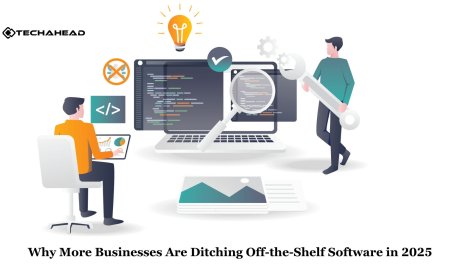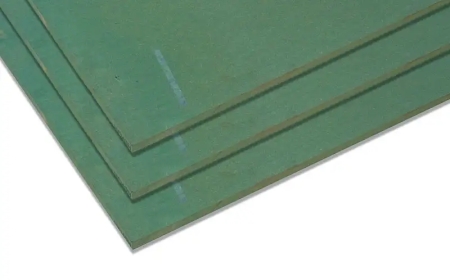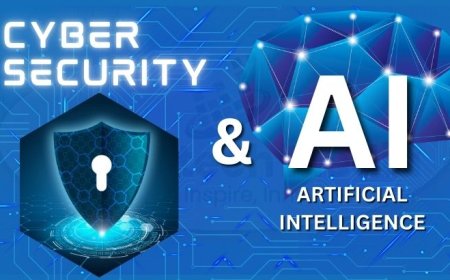Why Your Business Needs Layer 2 Blockchain Solutions in 2025
Discover why Layer 2 blockchain solutions are essential for businesses in 2025. Learn how they reduce costs, improve scalability, enhance user experience, and power next-gen Web3 applications.

As blockchain technology continues to mature, businesses are increasingly turning to scalable, efficient solutions to support their digital transformation. One of the most groundbreaking advancements in recent years is the rise of Layer 2 blockchain solutionsa crucial evolution addressing the scalability limitations of traditional Layer 1 blockchains like Ethereum, Bitcoin, and others.
In 2025, embracing Layer 2 isnt just a competitive advantageits a necessity. Whether you're running a fintech firm, a gaming platform, an NFT marketplace, or a global enterprise, Layer 2 technologies offer the performance and cost efficiency that modern users demand.
Understanding Layer 2 Blockchain Solutions
Before diving into the business case, its important to clarify what Layer 2 blockchain solutions are.
Layer 2 refers to protocols or technologies built on top of Layer 1 blockchains (such as Ethereum) to enhance speed, reduce fees, and increase scalability. While Layer 1 ensures decentralization and security, Layer 2 takes care of transaction throughput and cost optimization.
Popular examples include:
-
Optimistic Rollups (e.g., Arbitrum, Optimism)
-
Zero-Knowledge Rollups (zk-Rollups) (e.g., zkSync, StarkNet)
-
Sidechains (e.g., Polygon PoS)
-
State Channels
-
Plasma Chains
These solutions batch or offload transactions from the main chain, verifying them faster and at a fraction of the cost.
The Scalability Bottleneck in Web3
Layer 1 blockchains are often slow and expensive due to their consensus mechanisms and network congestion. For instance:
-
Ethereum can handle only 1530 transactions per second (TPS)
-
High gas fees can exceed $50$100 per transaction during peak demand
-
Finality times can take several minutes or longer
In contrast, Layer 2 solutions offer:
-
Thousands of TPS
-
Transaction fees under a cent
-
Near-instant finality
These improvements are essential for businesses aiming to build real-world Web3 applications.
Why Your Business Needs Layer 2 in 2025
1. Unlock Massive Cost Savings
The most obvious benefit of Layer 2 solutions is the drastic reduction in gas fees. When operating on Ethereum Layer 1, performing frequent smart contract operations (minting, trading, staking, etc.) can burn through your budget.
Layer 2 platforms, on the other hand, reduce fees by:
-
Compressing data before sending to Layer 1
-
Executing transactions off-chain and submitting only proofs
-
Avoiding full Layer 1 validation for every action
For businesses, this means:
-
Affordable micro-transactions
-
Scalable decentralized applications (dApps)
-
Reduced customer onboarding costs
2.Scale Without Sacrificing Security
Layer 2 inherits the security guarantees of the base Layer 1 chain, especially in rollup-based models. This allows you to:
-
Secure data and assets using Ethereum-grade security
-
Avoid building your own consensus model
-
Focus on product innovation instead of security infrastructure
As security remains paramount in blockchain ecosystems, this blend of scale + safety is a major advantage.
3.Enable Real-Time User Experiences
No customer wants to wait minutes for a transaction confirmation or pay $20 in fees just to interact with your app. Layer 2s support:
-
Fast confirmation times (<1 second in many cases)
-
Real-time dApp interaction
-
Smooth onboarding with low barriers
This is especially valuable in:
-
Gaming and metaverse platforms
-
DeFi protocols needing quick trading
-
NFT marketplaces with dynamic auctions
4.Support for Mass Adoption and Onboarding
For your blockchain project to go mainstream, it must support millions of users simultaneously. Layer 2 makes this feasible.
Use cases like:
-
Ticketing
-
Supply chain tracking
-
Subscription payments
-
Social networks and content platforms
All demand high-volume, low-cost interactionsa sweet spot for Layer 2 blockchains.
5.Lower Environmental Impact
As sustainability becomes a priority, Layer 2 solutions offer a greener alternative to energy-intensive Layer 1 chains. Most Layer 2s:
-
Use Proof-of-Stake (PoS) or rollup mechanisms
-
Drastically reduce energy consumption per transaction
-
Align with ESG goals for eco-conscious enterprises
Your business can tout climate-friendly blockchain operations without compromising on capability.
6.Interoperability and Ecosystem Access
Leading Layer 2s integrate deeply with Ethereum and other ecosystems, enabling:
-
Seamless bridging of tokens and assets
-
Compatibility with popular wallets and tools
-
Shared liquidity with Layer 1 DeFi protocols
This plug-and-play infrastructure gives your dApp instant access to millions of users, developers, and partners.
7.Faster Innovation and Experimentation
Because Layer 2 environments are:
-
Faster to deploy
-
Cheaper to test on
-
More flexible in development
They empower your team to:
-
Build MVPs faster
-
Launch features without high risk
-
Innovate continuously and agilely
This rapid development cycle is a competitive edge in Web3 product development.
8.Ideal for Enterprise Use Cases
Enterprises are actively exploring blockchain for:
-
Identity management
-
Cross-border payments
-
Tokenized loyalty programs
-
Secure data sharing
But concerns around costs, latency, and throughput hinder adoption.
Layer 2 solves these with:
-
High-speed, low-cost environments
-
Enhanced privacy options
-
Compliance features (like KYC and AML modules)
Its no surprise that enterprise blockchain pilots are shifting towards Layer 2 in 2025.
9.Compatible With Account Abstraction & UX Upgrades
Layer 2s support the rollout of ERC-4337 and account abstraction, which:
-
Simplify wallets and onboarding
-
Allow for social logins and recovery
-
Enable meta-transactions and gasless interactions
These improvements are key to converting Web2 users into Web3 customers, making Layer 2 a growth catalyst for user adoption.
10.Position Your Brand for the Future of Web3
In 2025, the Web3 landscape is becoming:
-
More competitive
-
User-centric
-
Integrated with AI, IoT, and real-world assets (RWAs)
Layer 2 solutions provide the infrastructure backbone to:
-
Connect on-chain and off-chain data
-
Scale real-world asset tokenization
-
Integrate AI-powered smart contracts efficiently
Your business gains a future-proof foundation to thrive in the next-gen internet economy.
Use Cases of Layer 2 in Action
Lets explore how real companies and industries are already benefitting from Layer 2:
DeFi
-
Uniswap on Arbitrum/Optimism: Lower fees and faster trades for liquidity providers and traders.
-
Aave on Polygon: Makes lending accessible for users who cant afford Layer 1 fees.
Gaming
-
Immutable X: Provides gasless minting and trading for NFT-based games like Gods Unchained.
-
Ronin (for Axie Infinity): Scaled to millions of users using a custom Layer 2 sidechain.
Supply Chain
-
Companies are using zk-rollups to track product provenance and timestamp audits without bloating the base chain.
E-Commerce and Micropayments
-
Payment apps leveraging Layer 2 can support subscription models, tipping, and content monetization without high costs.
Choosing the Right Layer 2 for Your Business
Not all Layer 2s are created equal. When choosing a solution, consider:
| Feature | Questions to Ask |
|---|---|
| Technology Type | Are you using rollups, sidechains, or state channels? What are their limitations? |
| EVM Compatibility | Can it support existing smart contracts and tools (like MetaMask)? |
| Community Support | Is the developer ecosystem active and well-documented? |
| Security Guarantees | How is data validated? Is it fraud-proof or zk-proof secured? |
| Bridging Options | How easy is it to move assets between Layer 1 and Layer 2? |
| Partnership Ecosystem | Are there launchpads, exchanges, or wallets that support the Layer 2? |
Final Thoughts
Layer 2 blockchain solutions are no longer a fringe innovationthey are now the gateway to scalable, secure, and efficient Web3 operations. In 2025, your business can't afford to ignore the performance and user experience demands that only Layer 2 can fulfill.
Whether you're building a dApp, launching a token, managing digital assets, or integrating blockchain into enterprise operations, Layer 2 gives you:
-
Lower costs
-
Faster execution
-
Greater scalability
-
Secure interactions
Adopting Layer 2 is the smart move toward mainstream adoption and long-term success in the decentralized world.






































